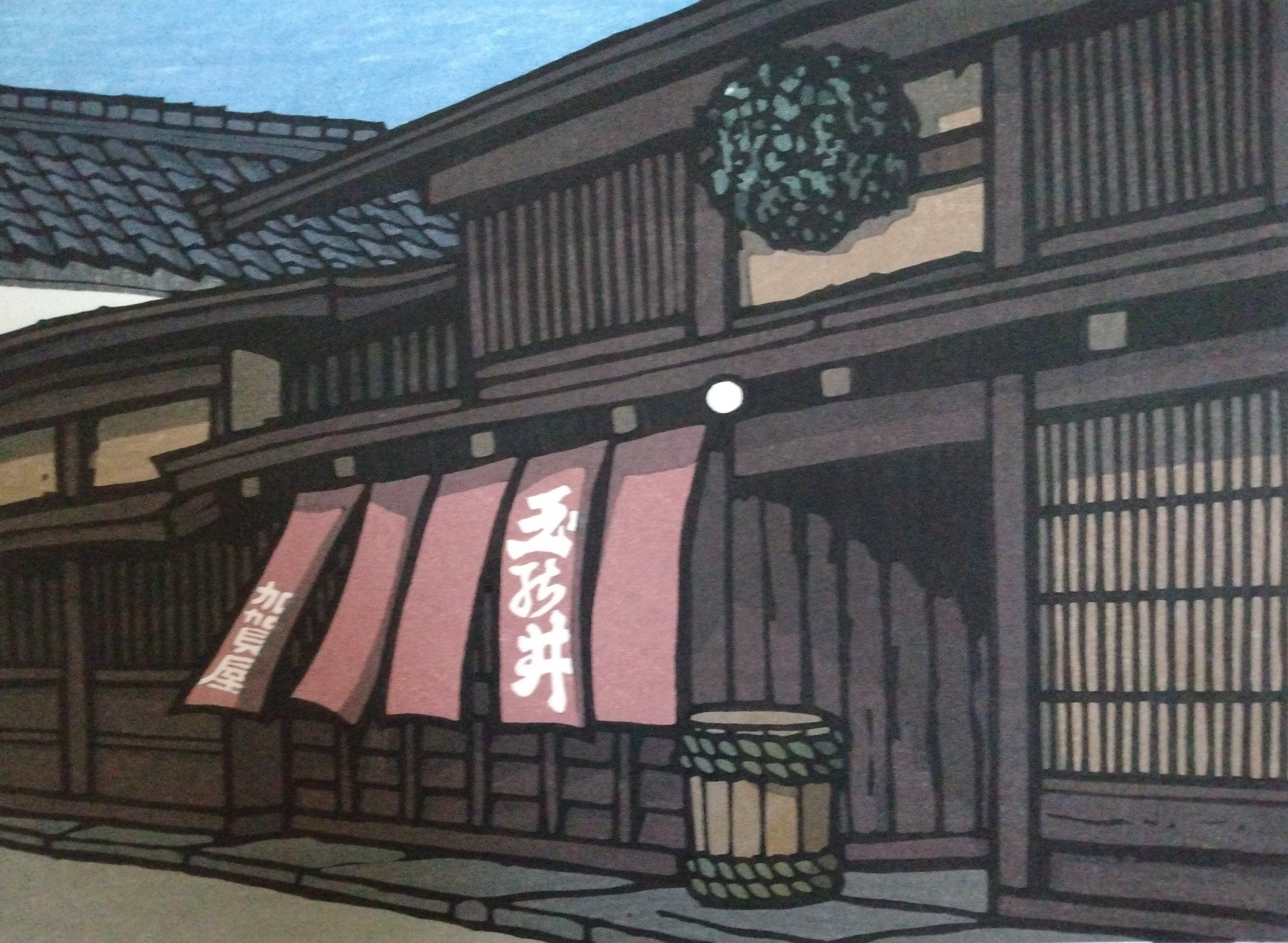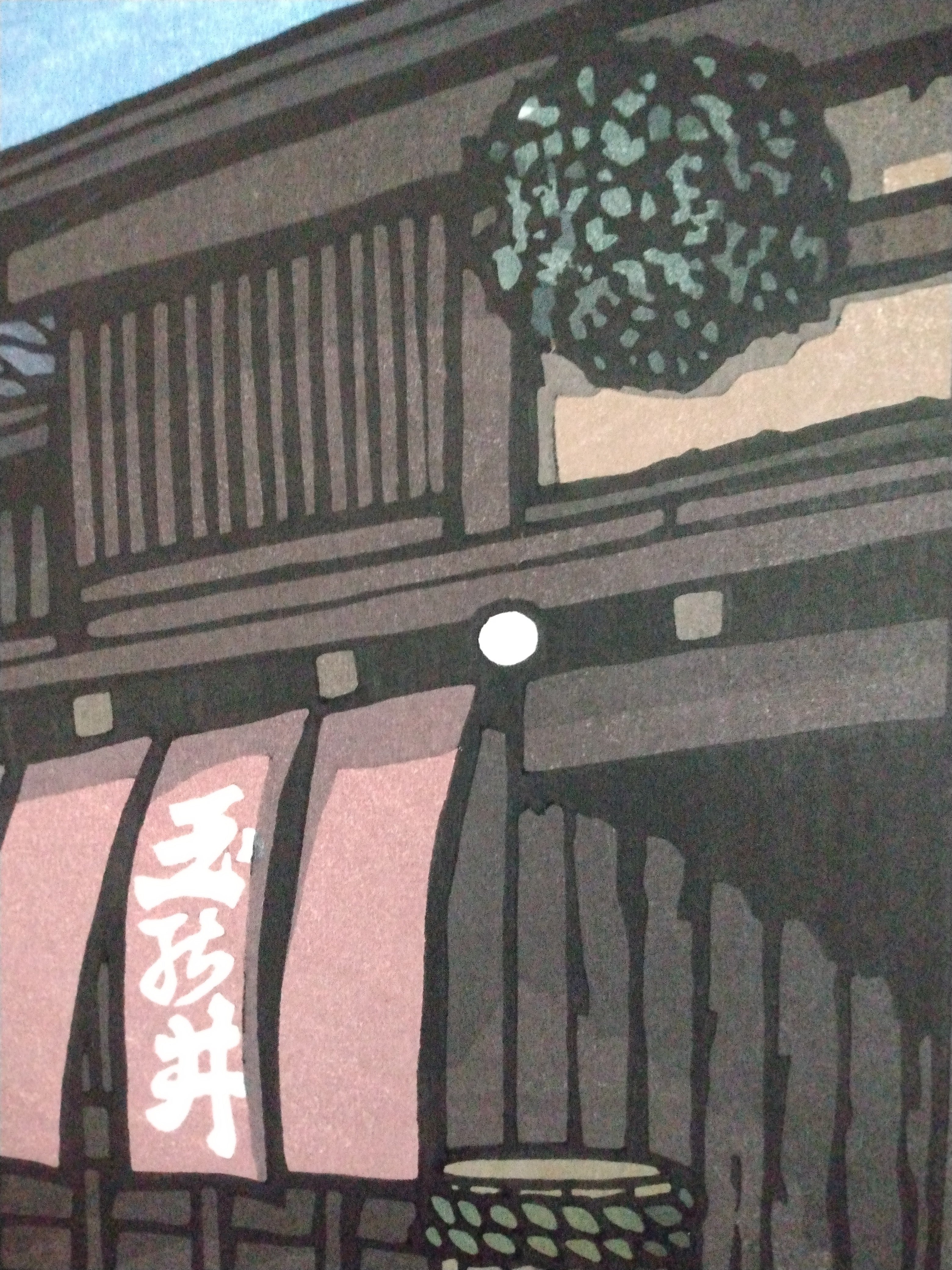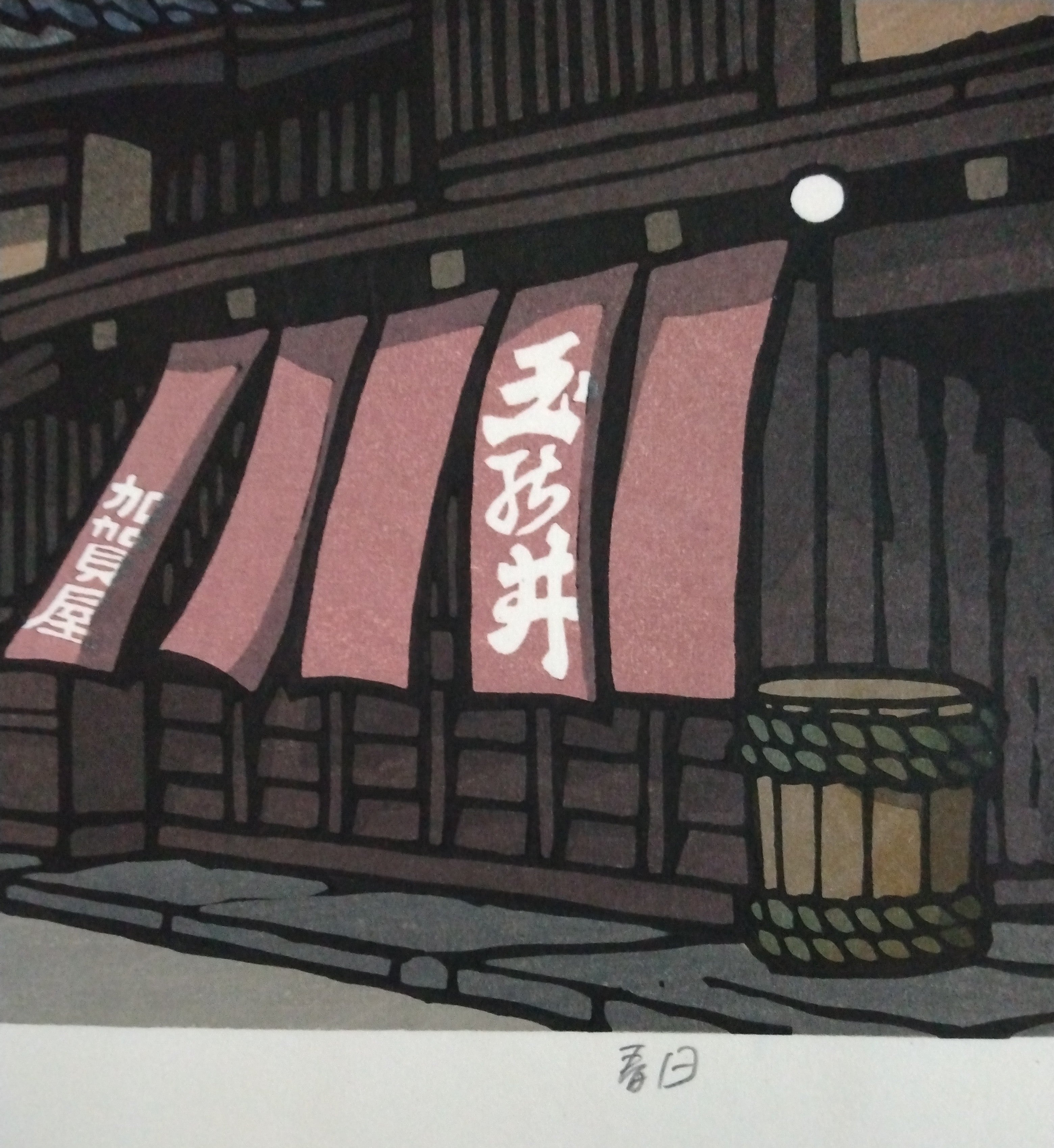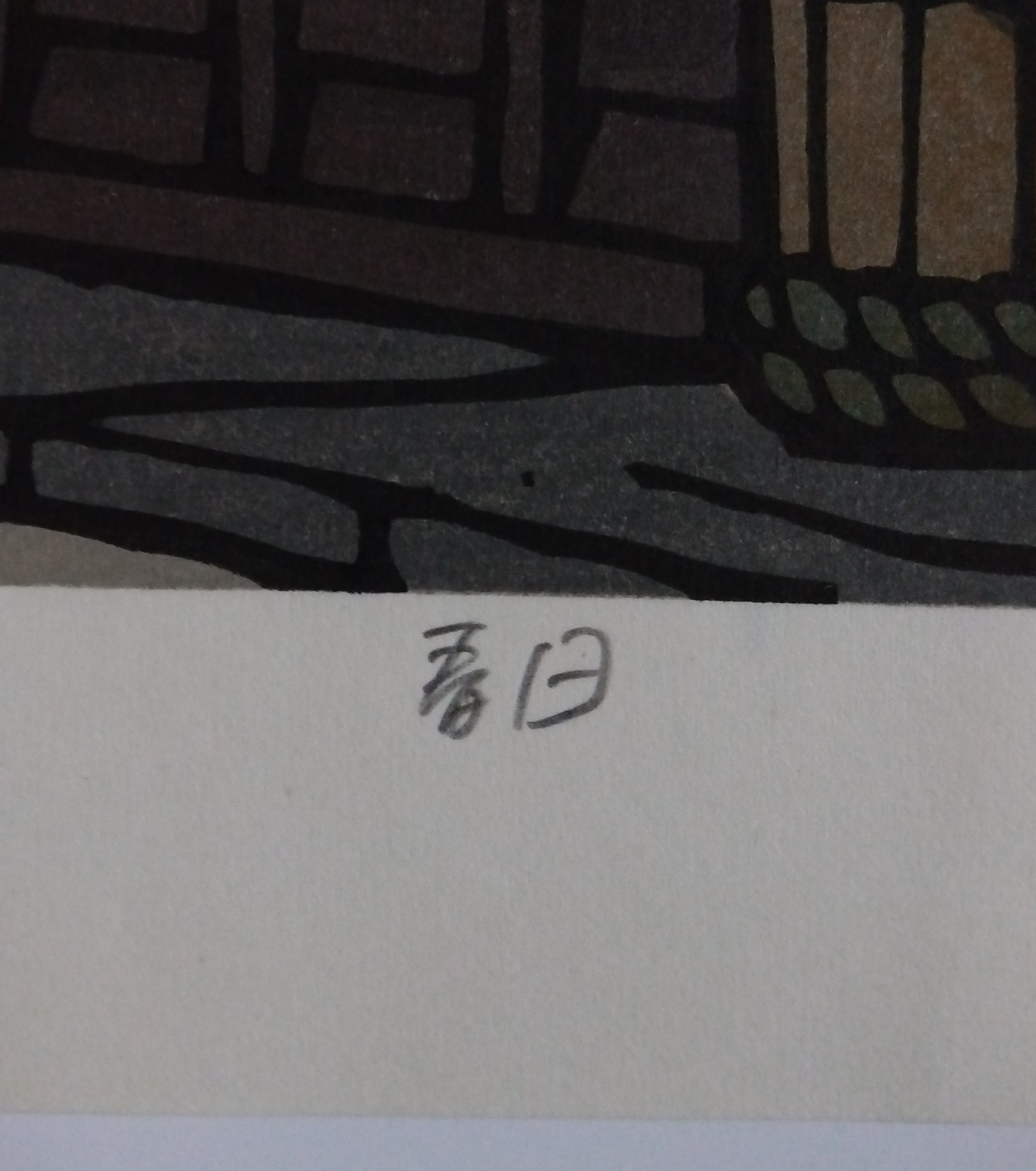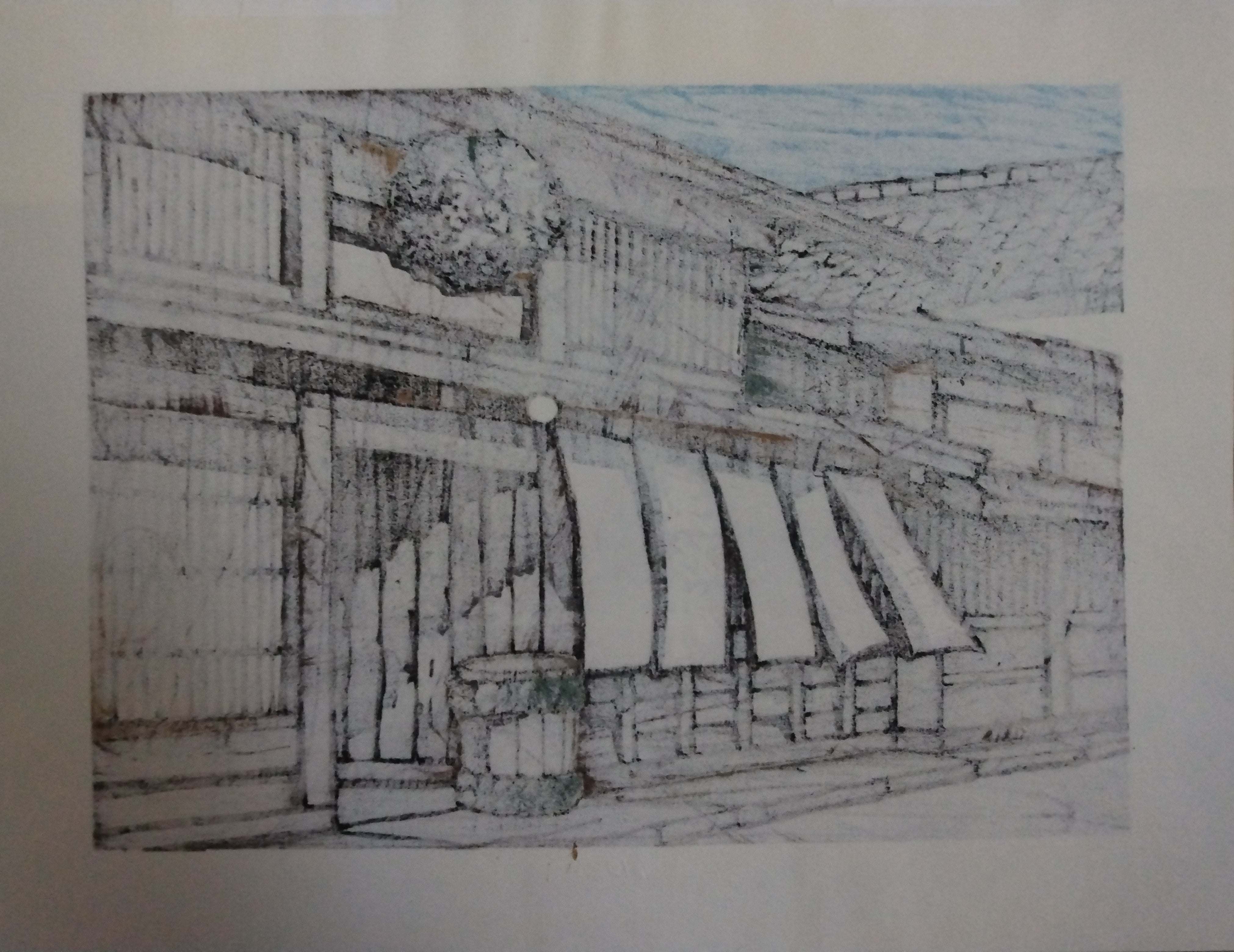Description
Woodblock Print by Katsuyuki Nishijima, "Spring Day" (Shun Jitsu). Artist signed print. Ca. 1980's. Horizontal format; H. 7.5"(19cm) X W. 10.5"(26.75cm). Excellent condition. *Fully matted, framed, & delivered option may be available for local purchasers (I-5 corridor from Seattle to Blaine, WA). Please contact for details.
The image of a classic wooden lattice front building with a brown noren (shop curtain) waving in the wind over the entry way is the Niki Sake Brewery in Takayama, Gifu Prefecture. Niki was established in 1695 and is still a flourishing sake brewery today. The shop curtain reads "Tamanoi" (The Treasured Well) and refers to the brand name of Niki's popular sake, in addition to the well under the building that provides the excellent water that makes their sake. The green ball suspended above the entry is the sugidama (Cryptomeria ball), also called a sakabayashi (sake forest), which is a a ball constructed of the leaves of the Japanese Cedar (Cryptomeria) or sugi tree. These are commonly hung outside of the brewery once the first sake of the year is ready, often in winter. They turn brown over time, before being replaced by a new green one when the next season's batch is ready. As the title of this print is "Spring Day," it's probably a day in early spring, which starts around the first week of February according to the traditional Japanese calendar, as the ball is still a vibrant green. It is a call to drink fresh sake! Takayama is not only home to a large historical preservation district of similar buildings, which includes several sake producers, but also to Hidahomare Rice. The combination of Takayama's climate, special rice, and excellent water have made it a much favored sake producing region for centuries.
Katsuyuki Nishijima, 1945 – present.
Katsuyuki Nishijima was born in Yamaguchi Prefecture at the southwest end of the main island of Honshu. At the age of 19, he started studying the art of woodblock printing making at the Mikumo Publishing Company in Kyoto. By the early 1970’s, he was beginning his career as a Sosaku Hanga (Creative Print) artist. As opposed to traditional woodblock prints of the 19th Century and earlier that were created by a team of artisans composed of designers, carvers, colorists, printers, and publishers; the Sosaku Hanga movement of the 20th Century highlighted the work of artists who self-drew, self-carved, and self-printed their own expressive works. Nishijima is a very popular contemporary Kyoto print artist and his works have been collected and exhibited widely in Japan, the US, and Europe.
Nishijima’s works could be called “romantic” in that there is something idealized and old-fashioned about his images. They rarely contain people; or modern elements such as cars, telephone wires, or even the ubiquitous Japanese trains. They focus on architectural elements such as tiled and thatched rooftops, verandas, noren shop curtains, the wooden latticework in front of Kyoto machiya buildings, stone walls, as well as Japanese rural landscapes. While these could be considered romantic and detached from reality, these elements still exist in modern-day Japan and are what visitors are drawn to and remember in places like Kyoto, Shigaraki, Takayama, and the like. One could say that instead of romanticizing Japanese scenery, he’s actually bringing out the essence of what is beautiful and important in humanity’s view of traditional Japan.

